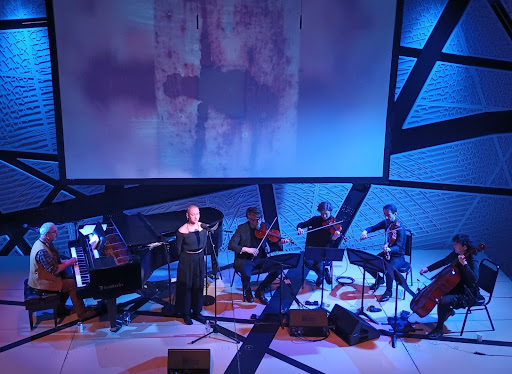“I just love turning on the torches and seeing the flames shooting out,” Poast said as he described his process of metal work. “Using that flame to cut directly into this hard surface that seems so impenetrable and yet with the right equipment, like torches and flames, you can just cut right into it, heat it up, and bend it very easily.”
Poast just began working with the St. John’s Fine Arts Department this fall teaching 3-D design. It is a fitting position for a man who spent his life surrounded by art. His mother, a painter, taught him the skill. Poast’s father, a photographer, was also a steel worker and Poast proposes, “I guess that’s how I get my love for metal sculpture.”
He started painting early on in his life and would attach sound objects, such as wood, to his canvas. Eventually his work evolved into a more sculptural style and it became more arduous to attach objects to the canvas.
“It was getting hard to attach all those different kinds of materials together,” Poast said. “I thought if I could weld it, it would be so much easier. So I took a sculptural welding class and it changed my life.”
Poast did not learn the process of metal work overnight. He worked with metal for 10 years and discovered that he had an affinity for steel, as opposed to copper or aluminum, which can also be used in metal work. “I think it [steel] is the most direct metal and it’s easy to work with,” he said. “You don’t need any special equipment just basic welding and cutting equipment.”
Although he has been working for quite some time, Poast still describes finishing his work with passion, giving every ounce of thought and emotion to his art.
“When I feel a piece is finished, I feel empty; I feel as if I have expressed everything I want to or need to express in it,” Poast said.
That passion transfers over to his teaching. While he teaches a required course for art majors, he still finds teaching gratifying. He described a moment where he and students connect in thought.
“I think the most rewarding thing [as a teacher] is when you present the students with materials or knowledge of some sort and you see that magic light go on and you say ‘oh!'” Poast said. “To me that’s like a wonderful moment in teaching.”
Poast, who received a Masters of Fine Arts Degree from the City University of New York’s City College, is not limited solely in visual arts when it comes to his creativity. He earned his undergraduate degree in classical music from the University of Cincinnati and has conducted orchestras in the past.
His advice to students, then, is to take more risks.
“A lot of times in college, or even in life situations, we’re always a little hesitant to take risks because we don’t want to fail or to look stupid,” Poast explained. “But it’s in those risk-taking moments that you actually are the most alive.”
With professors like Poast, who has 11 pieces of work on display on the fourth floor of St. John’s Hall through Oct. 9, it is easy to be optimistic in the thriving art culture at St. John’s.

















